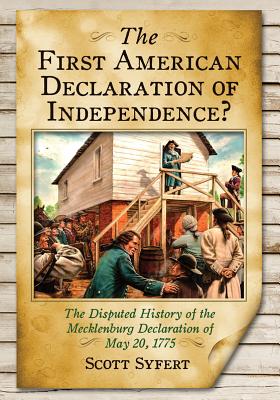

It did so in the conventional language of the contemporary law of nations drawn from the hugely influential book of that title (1758) by the Swiss jurist Emer de Vattel, a copy of which Benjamin Franklin had sent to Congress in 1775. It marked the entry of one people, constituted into thirteen states, into what we would now call international society. The Declaration of Independence was primarily a declaration of interdependence with the other powers of the earth. Thomas Paine had warned in Common Sense in January 1776 that “the custom of all courts is against us, and will be so, until by an independence, we take rank with other nations.” So long as the colonists remained within the empire, they would be treated as rebels if they organized themselves into political bodies with which other powers could engage, then they might become legitimate belligerents in an international conflict rather than treasonous combatants within a British civil war.

The colonists needed military, diplomatic, and commercial help in their revolutionary struggle against Great Britain only a major power, like France or Spain, could supply that aid. The final paragraph of the Declaration announced that the United States of America were now available for alliances and open for business. This was what the Declaration declared to the colonists who could now become citizens rather than subjects, and to the powers of the earth who were being asked to choose whether or not to acknowledge the United States of America among their number.
Who was the main author of the declaration of independence full#
that as FREE AND INDEPENDENT STATES, they have full Power to levy War, conclude Peace, contract Alliances, establish Commerce, and to do all other Acts and Things which INDEPENDENT STATES may of right do. The Declaration therefore “solemnly Publish and Declare, That these United Colonies are, and of Right ought to be, FREE AND INDEPENDENT STATES” and concluded with a statement of the rights of such states that was similar to the enumeration of individual rights in the Declaration’s second paragraph in being both precise and open-ended: On the basis of those facts, his colonial subjects could now rightfully leave the British Empire. one People to dissolve the Political Bands which have connected them with another, and to assume among the Powers of the Earth, the separate and equal Station to which the Laws of Nature and of Nature’s God entitle them. . .Īfter stating the fundamental principles-the “self-evident” truths-that justified separation, they submitted an extensive list of facts to “a candid world” to prove that George III had acted tyrannically. In the opening paragraph, the authors of the Declaration-Thomas Jefferson, the five-member Congressional committee of which he was part, and the Second Continental Congress itself-addressed “the opinions of Mankind” as they announced the necessity for The Declaration was addressed as much to “mankind” as it was to the population of the colonies. One of its most enthusiastic admirers was the nineteenth-century Hungarian nationalist, Lajos Kossuth: for him, the Declaration was nothing less than “the noblest, happiest page in mankind’s history.”

And, as the first successful declaration of independence in world history, its example helped to inspire countless movements for independence, self-determination, and revolution after 1776. It enshrined what came to be seen as the most succinct and memorable statement of the ideals on which that nation was founded: the rights to life, liberty, and the pursuit of happiness the consent of the governed and resistance to tyranny. It has been fundamental to American history longer than any other text because it was the first to use the name “the United States of America”: in this sense, the Declaration was the birth certificate of the American nation. No American document has had a greater global impact than the Declaration of Independence.


 0 kommentar(er)
0 kommentar(er)
